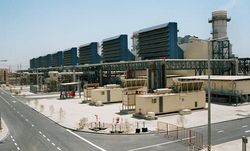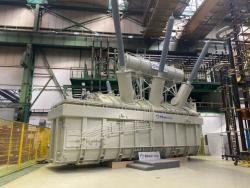
OR WAIT null SECS
© 2024 MJH Life Sciences™ and Turbomachinery Magazine. All rights reserved.
Anti bog-down control system for turbine-compressor systems
Gas turbines are commonly used to drive large compressor systems that are used, for example, in the refrigeration cycles of processes for liquefying natural gas. In order to maximize the efficiency of such turbine/compressor systems, the gas turbines are typically operated at or near their maximum rated speed and load. Various changes in the operating parameters of a turbine/compressor system may cause the turbine to slow down. A partial slowdown in the speed of the turbine tends to precipitate further slowdown until the turbine “bogs down” (i.e., automatically shuts down when it reaches a critically low operating speed).
Several factors can cause a gas turbine to slow down. First, if two compressors are running in parallel, a decrease in the output of a first compressor would increase the load on the second compressor, thereby causing the turbine driving the second compressor to slow down. Second, if a starter/helper motor shuts down, the loss in power provided by the starter/helper motor can result in a sudden increase in the train load and accompanying decrease in turbine speed. Third, the operating conditions of the gas turbine can cause it to slow down when, for example, hot gases from the turbine exhaust are blown into an air intake of the turbine.
The load of centrifugal compressors is determined primarily by the fluid flow rate through the compressor and the fluid pressure increase across the compressor. When the fluid flow rate through the compressor becomes too low, the compressor can enter an operating condition know as “surge.” The difference between the operating flow rate of a compressor and its surge flow rate is known as the "surge margin." Surge margin is generally expressed as a percentage difference between the operating flow rate and the surge flow rate, with the flow rates being expressed on a volumetric basis. For example, if surge flow rate is 10 and operating flow rate is 12, the operating surge margin is 20 percent.
But recycling reduces efficiency, and therefore setting the operating surge margin too high can limit the efficiency of the system and result in wasted energy. Setting the operating surge margin too low can result in the compressor reaching surge and being damaged.
Accordingly, there is a need for an improved compressor/turbine monitoring and control system that does not suffer from the problems and limitations.
John Wolflick, Megan Evans, Jaleel Valappil, Bobby Martinez, and Marc Bellomy of ConocoPhilips have been awarded a patent for developing a control and monitoring system that would prevent bogdown.
In one version, the gas turbine drives a first compressor, which increases the pressure of a first working fluid. The process comprises the following steps: (a) sensing the rotational speed of the turbine; (b) sensing the load of the first compressor; and (c) adjusting flow of the first working fluid into the first compressor based at least in part on the rotational speed of the turbine and the load of the first compressor.
In another version the process comprises the following steps: (a) sensing the rotational speed of the turbine; (b) adjusting at least one operating parameter of the first compressor to thereby reduce the load of the first compressor; and (c) causing overfiring of the turbine to thereby increase the rotational speed of the turbine.
Still another version of the invention concerns an apparatus comprising a gas turbine, a compressor, a speed controller, a load indicator, a throttle valve, and a surge margin controller. The compressor is configured to be driven by the gas turbine. The speed controller generates a surge margin setpoint based on the rotational speed of the gas turbine. The load indicator generates a surge signal based on the load of the compressor. The throttle valve controls fluid flow into the compressor. The surge margin controller modulates the throttle valve based at least in part on the surge margin setpoint and the surge signal.



